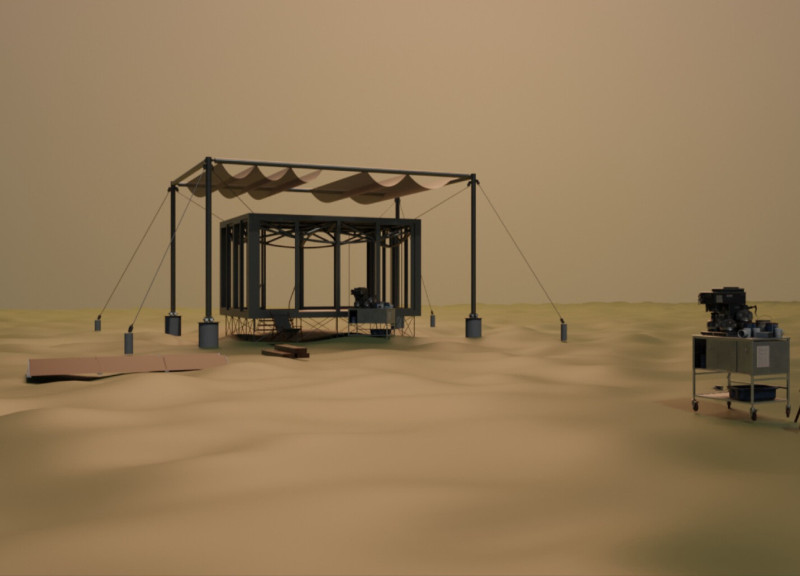5 key facts about this project
The primary function of this architectural project involves addressing the needs of its occupants while fostering a sense of community engagement. This is realized through open, flexible spaces that allow for a variety of uses. The design incorporates areas for both private reflection and communal interaction, encouraging social dynamics within a well-defined framework. The layout efficiently responds to the surrounding topography, creating a seamless transition between the built environment and the natural landscape.
One of the project's unique design approaches includes the blend of various materials, which contributes to the overall visual narrative and functional performance. The utilization of materials such as reinforced concrete, glass, timber, and metal permits dynamic interactions among the building's components. Reinforced concrete serves as a robust foundation, while expansive glass facades invite natural light, fostering a connection to the exterior landscape. Timber elements evoke a sense of warmth and familiarity, balancing the more industrial characteristics of the concrete and metal.
The design showcases specific architectural details that enhance usability and aesthetic appeal. For instance, strategically placed overhangs and cantilevered roofs provide shading and shelter, promoting energy efficiency while also adding visual interest. The careful alignment of windows creates optimal views and ventilation, further contributing to occupant comfort. In addition, integrated landscaping elements, such as green rooftops and vertical gardens, demonstrate a commitment to sustainability and biodiversity, enhancing the ecological value of the site.
Furthermore, the project excels in its innovative approach to spatial organization. Rather than adhering to a conventional layout, the design explores open-plan configurations that prioritize flow between spaces. This not only creates a sense of spaciousness but also encourages the mingling of activities, thereby fostering a vibrant atmosphere. Special attention is paid to the acoustics and material choices within social gathering areas, ensuring that they are conducive to interaction, while more private spaces prioritize tranquility.
An essential aspect of the project lies in its engagement with the cultural heritage of the area. The architectural language subtly reflects local traditions and styles, ensuring that the new structure resonates with the community's identity. By respecting historical context while introducing contemporary design languages, the project bridges the past and the present, creating a dialogue with its environment.
As the architectural project unfolds, one cannot overlook the importance of sustainability which underpins many design decisions. The integration of renewable energy solutions, such as solar panels and rainwater harvesting systems, highlights a forward-thinking approach to resource management. Furthermore, careful consideration of building orientation and thermal mass allows for reduced energy consumption, ensuring long-term viability and minimizing environmental impact.
In sum, this architectural project embodies a synthesis of thoughtful design, materiality, and contextual awareness. It provides a multi-faceted approach to nurturing community life while respecting the natural and cultural landscape. The architectural plans, sections, and designs serve as valuable resources for further exploration into the nuances of the project's vision and execution. For those interested in delving deeper into the architectural ideas and details that define this design, a comprehensive review of the project presentation is highly encouraged.


























